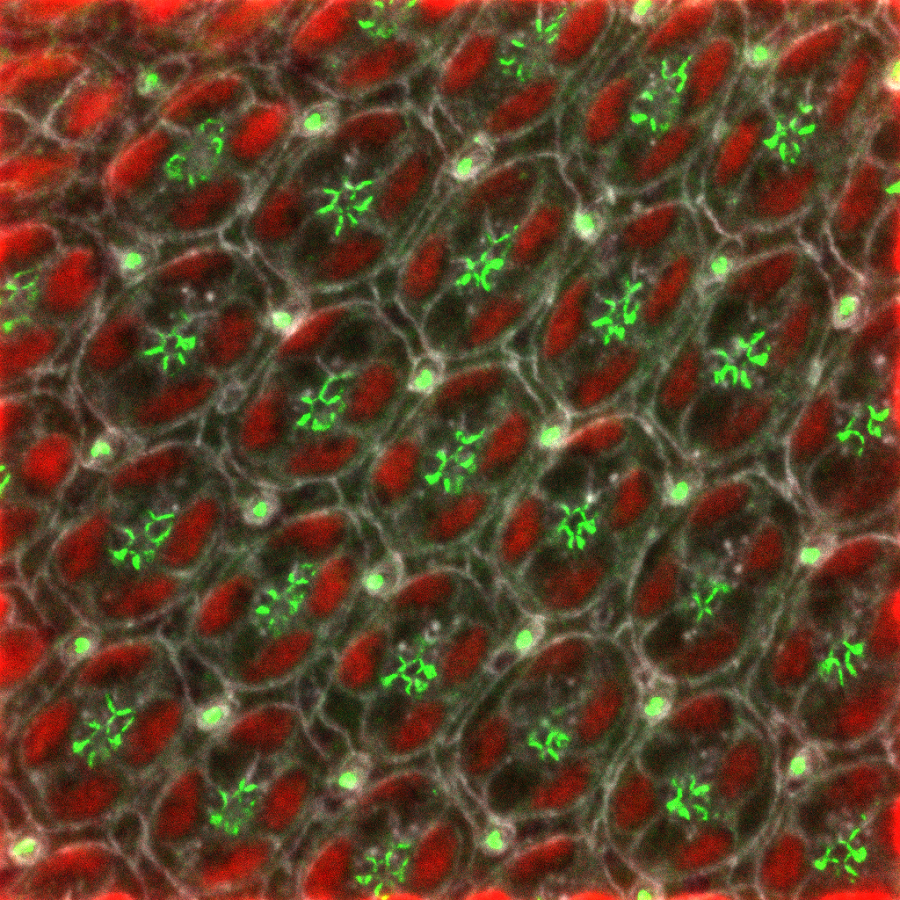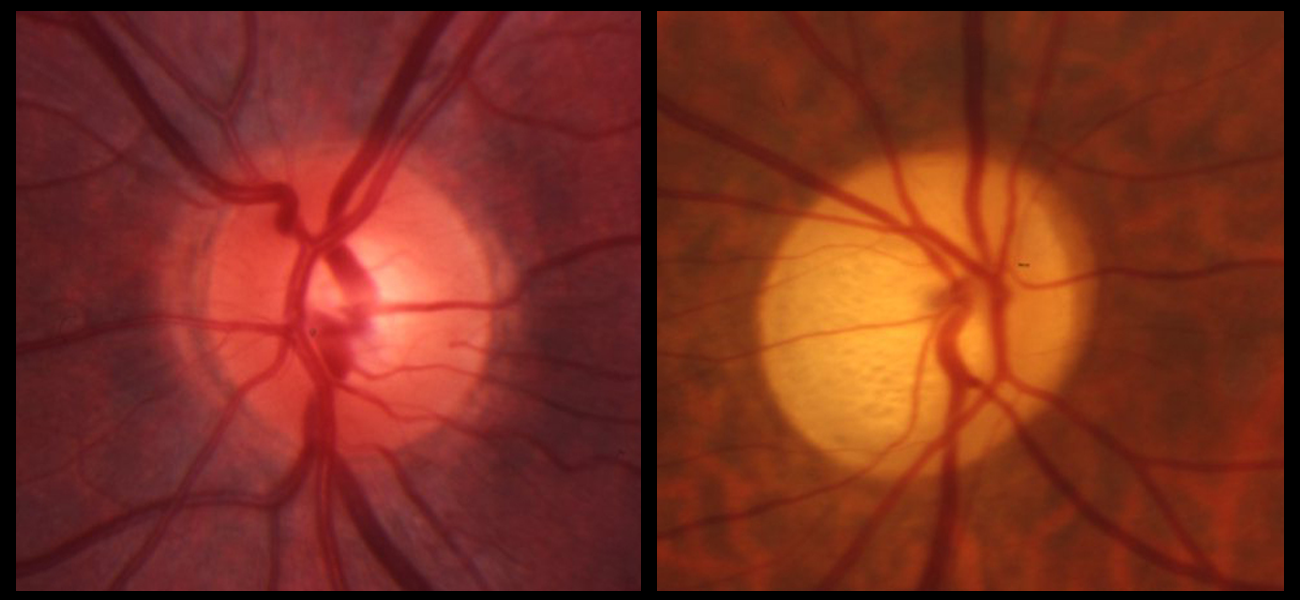Image of the Month: Snapshot of eye development in the fruit fly

In his lab at Baylor College of Medicine, Dr. Hugo Bellen and his colleagues work with the fruit fly, Drosophila melanogaster, as a model system to provide answers to some of the most complex questions in biology and medicine.
The lab’s research interests include:
- neuronal communication and maintenance
- development of tools to control transcript and protein levels in adult neurons to assess which proteins are required for neuronal function and survival and
- the creation of genome-wide libraries to manipulate genes in vivo.
“It is striking to see how the fruit fly that looks and behaves completely different from a human has proved time and again to be an excellent model to study human disease. Since the function of many human genes is highly conserved in flies and a plethora of powerful genetic tools is already available in this system, it is becoming increasingly common for human geneticists to employ flies to quickly understand the function of human disease genes,” said Bellen.
The image above is part of a study between the Bellen lab and collaborators at the Institute of Genetics and Genomics of Geneva, Switzerland. The researchers found compelling evidence that links dynamin-binding protein (DNMBP) to congenital bilateral cataracts and severe vision loss. Congenital cataracts occur in infants and children. They are particularly serious because they can inhibit visual development leading to permanent vision loss or impairment that cannot be entirely reversed with cataract surgery.
Find out all the details about this study in the American Journal of Human Genetics and here.

Dr. Hugo Bellen is a professor at Baylor College of Medicine, an investigator at the Howard Hughes Medical Institute and a member of the Jan and Dan Duncan Neurological Research Institute at Texas Children’s Hospital.



